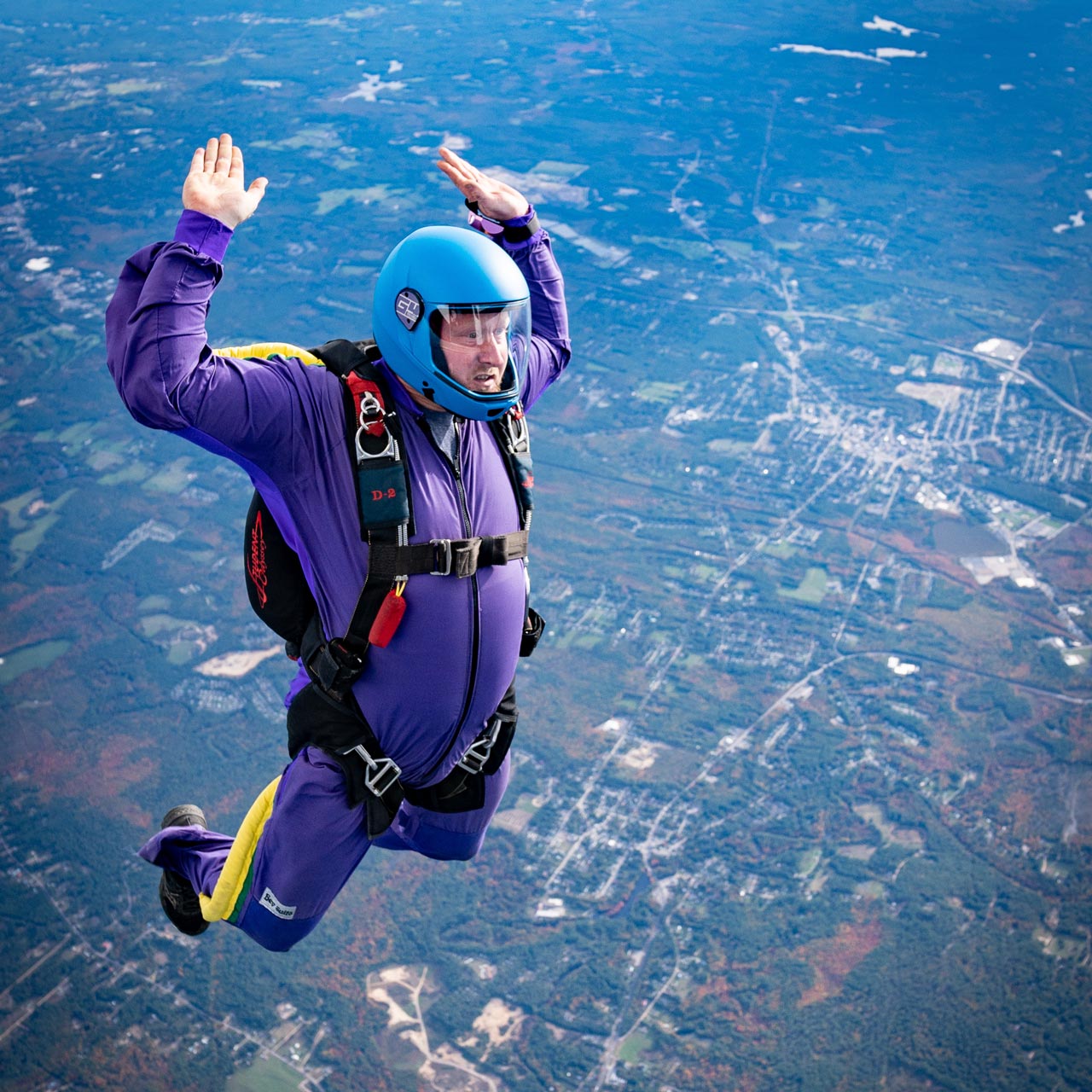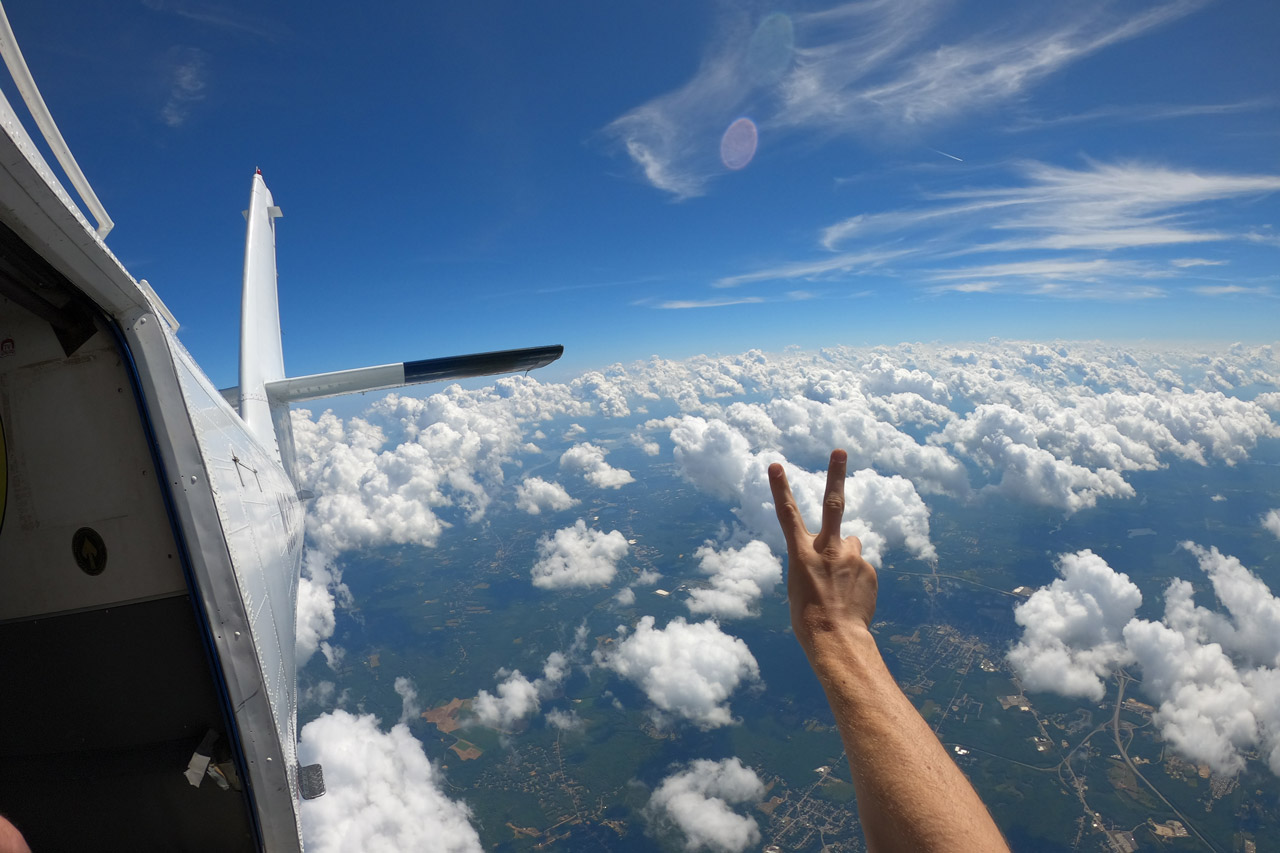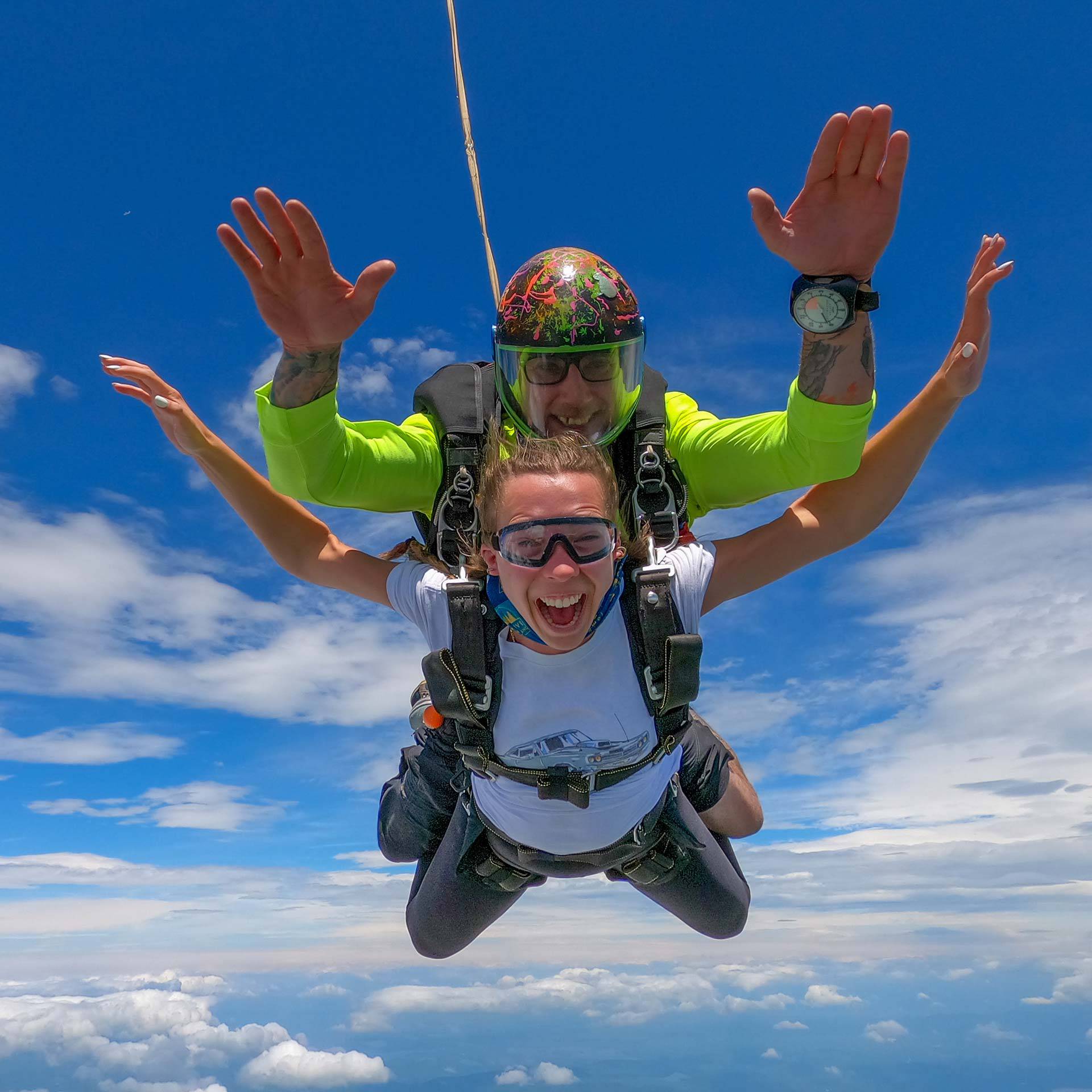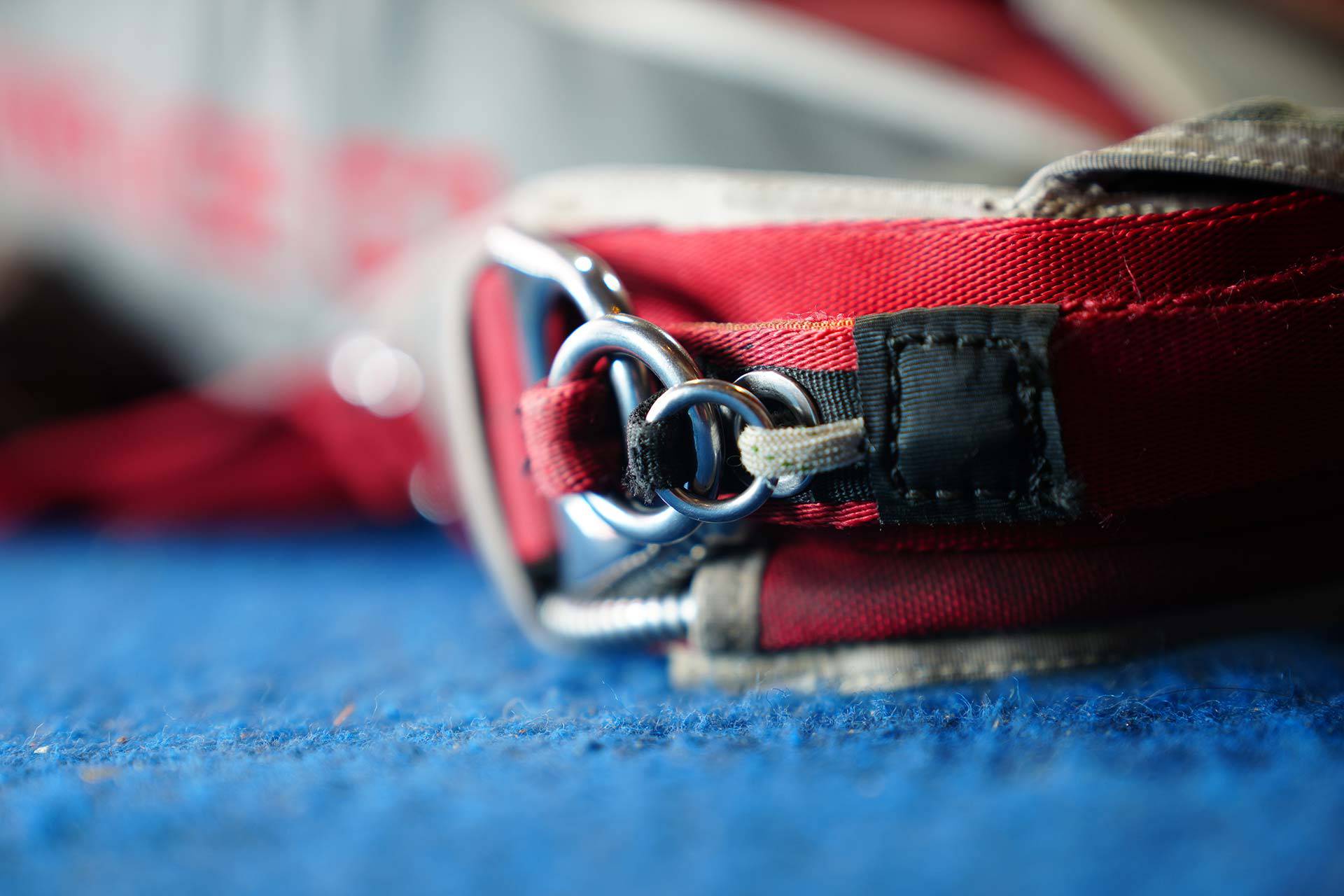The Skydiving Freefall
Blog
 Posted by: Curtis White
3 years ago
Posted by: Curtis White
3 years ago
Most people have one thing in mind when they think of skydiving: why, the skydiving freefall, of course! Sure, some think of billowing parachutes gently gliding down to earth, but more often than not, it’s those rock n’ roll thoughts of freefall that captivate would-be jumpers. It makes sense: a rapid descent into the wild blue yonder after leaping from the perceived “safety” of a plane is something worth fixating on.
So, does the experience of skydiving freefall live up to the hype? Here’s what to expect during your skydiving freefall.
Skydiving Freefall Physics
Before you have any flashbacks to yawning in the back row of your physics lecture, we promise to keep this simple!
The physics of skydiving freefall is quite a neat little puzzle. First of all, by definition, skydiving freefall is not the same as freefall according to Newtonian physics. In the latter, the only force acting upon a “freefalling” object is gravity. What makes skydiving freefall so interesting is the interaction of gravity and air resistance.
After you leave the aircraft, with your stomach positioned relative to earth (as you would on a tandem skydive) your body will begin to accelerate – but there is a limit to the speed you will reach. As you freefall, you will reach a speed known as terminal velocity. Terminal velocity is the point at which the air resistance you encounter is equal to the force of gravity upon you.

Skydiving Freefall Speed
Curious how fast a skydive freefall is? Typically, the skydiving freefall speed of a tandem skydiving pair, or a solo jumper in a belly-to-earth orientation, will be 120 mph. However, if you were to reduce your surface area and, therefore, the amount of air resistance you encounter – say by going head down or altering the axis you were flying on – your overall terminal velocity would increase.
In fact, some jumpers competitively seek to perfect their body positions to attain the highest skydiving freefall speeds possible. Take, for example, skydiver Henrik Raimer, the current Guinness World Record holder for the fastest speed in speed skydiving, who accelerated up to 373.6 mph (!!) during the FAI World Championships in 2016.
Skydiving Freefall Time
The timer on your skydiving freefall begins the moment you leave the aircraft and ends when your instructor deploys the parachute. Generally speaking, the amount of time you have in freefall will depend upon your exit altitude and your freefall speed.
At Skydive New England, we jump from a skydiving altitude height of 14,000 feet. Factoring in the time it takes to reach terminal velocity after exiting the aircraft, which is about 10 seconds, and then calculating a fall rate of 1000 feet per five seconds before it is time to deploy the parachute, a typical skydiving freefall will last between 50 and 60 seconds.

How Does Skydiving Freefall Feel?
The skydiving freefall doesn’t feel the way you might think. For starters, you don’t feel like you’re falling at all! Skydiving doesn’t cause the stomach-dropping sensation you get from a rollercoaster. Rather, because of the force of the relative wind as you fall, you feel supported. With practice, you can also use the relative wind to maneuver – turning left and right and even changing your fall rate. Once you are a solo skydiver, you can also use aerodynamics in skydiving freefall to change your flight orientation!
In addition to the physical feeling of skydiving freefall, there is also an emotional component. Many who skydive remark on the feeling of empowerment that accompanies the experience. And the kicker is this sublime sensation isn’t limited to the first time you skydive. You can experience these powerful feelings again and again.
Ready to experience skydiving freefall for yourself? The adventure awaits! Contact Skydive New England and schedule your first skydive today!
Categories:
You May Be Interested In:
Enter to Win a Free Skydive
Join our email list and enter to win a free tandem skydive. Drawings in April and December; winner announced on social media.
You’ll get a $10 coupon toward a tandem just for signing up! Must be 18 and under 240 lbs to jump.
*By submitting this form, you are consenting to receive marketing emails from Skydive New England, 40 Skydive Lane, Lebanon, Maine 04027. You can revoke your consent by using the SafeUnsubscribe link located at the bottom of every email. Emails are serviced by Constant Contact.


Even More Wicked-Fun Than It Looks!
Come see why the biggest DZ in New England is also the best.




